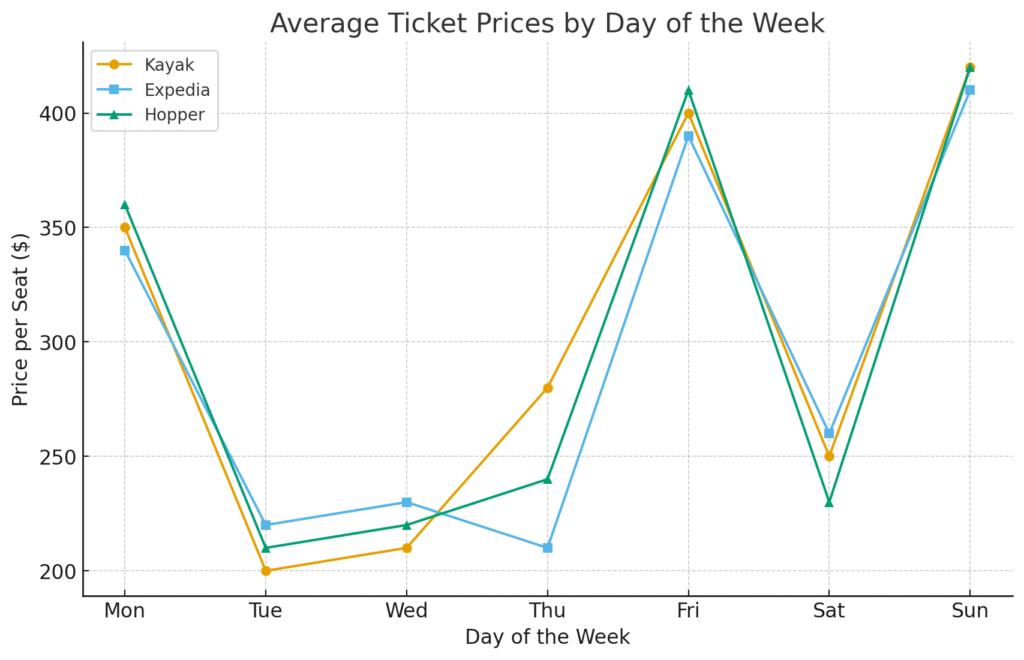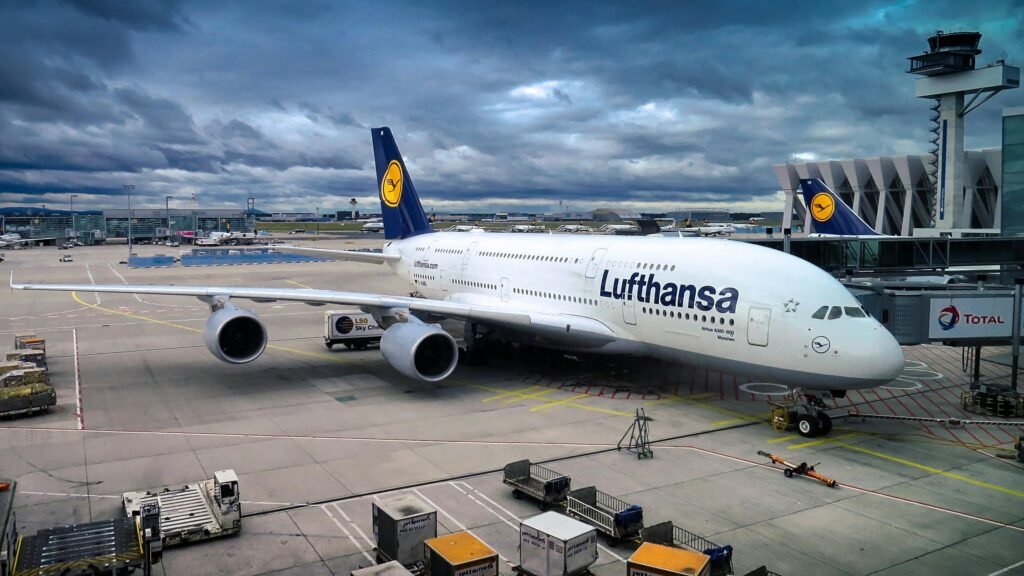One of the biggest things to figure out after we know the destination we want to go is how do we get there. Is the destination close enough to travel by vehicle, or does it make more sense to fly to your destination. For most of us that go on vacation it is usually further than a drive away. Whether is be a coastal paradise week in the Key West, or visiting the Colosseum in Italy. But just because you need to travel by plane, doesn’t mean it has to drain your wallet. One of the biggest factors affecting the cost of your trip is when you choose to fly. It’s no secret that airfare pricing is complex, with costs shifting daily—sometimes hourly—based on demand, availability, and airline algorithms.
The great news? With the right strategy, you can identify the cheapest days of the week to fly and save hundreds on your next trip. Whether you’re planning a quick domestic getaway or a big international adventure, knowing how flight prices work will put money back in your pocket.
First of all before we find the cheapest days to fly we must try to understand why the prices of airfare fluctuate so much. It isn’t as simple as numbers being drawn like numbers for the lottery. Nor pulled out of a hat. In fact they use a dynamic pricing system that is constantly adjusting fares based on competition, timing, and demand of the flight. This system in place considers a factors of a wide variety including the popularity of the route, how far out you have booked your ticket and even the day of the week you has chosen to fly. These factors can change so rapidly and frequently that the flight you book today might be completely different tomorrow for same ticket. As crazy as that sounds. It happens more than you know.
Even though there are a lot of things that factor in the price, the biggest of these factors that change the price is the demand of the flight. Such events can cause a spike in demand such as holidays, summer vacations, school breaks etc…. As the demand for the flight climbs, so does the price. On the other hand, same thing happens when the popularity of the travel lessens, the cost of the tickets will also decrease. These include, early spring or late fall. The time of the week can cause the tickets to fluctuate. Reason for this is a lot of business travelers will typically fly earlier in the week while vacationers usually prefer weekend travel. Time of day will also play a role. Red-Eye and early morning flights will usually go for less than midday flights. Another factor is how far in advance a ticket is purchased. For international flights, it tends to be cheaper if the ticket is purchased 2 to 6 months in advance and 1 to 3 months in advance for domestic.

You may be asking yourself, “So what is the cheapest days of the week to fly?” Data has shown on multiple platforms including Google Flights, Hopper, Skyscanner and Travelocity and the results are consistent. Mid week (Tuesday and Wednesday) always show the lowest fare prices. These tickets have a decrease in value as they see less traffic from both business and pleasure travelers, which in turn drives the prices down. Second lowest departure day is Saturday due to less travel. Weekend travel (Friday and Sunday) are more expensive due to the demand of flights. These are popular due to Fridays being the top departure day for weekend trips, while Sundays are convenient for travelers returning home. This means that if you can wait and start your trip later in the week and leave midweek or even Saturday, you can save a pretty significant amount of money. Avoiding peak weekend travel days whenever possible. Graph shown above to show the trend of days of the week that are cheaper as well as most expensive days to fly.
The difference in cost can be dramatic. Imagine you’re flying from Los Angeles to New York. A round trip departing Friday and returning Sunday might cost $450, while leaving on Tuesday and returning on Saturday could be as low as $280. That’s a significant difference. Meanwhile, If you depart and return midweek, such as Wednesday to Tuesday, you might see fares decrease and cost around $275. That’s nearly $200 in savings just by shifting your dates. Multiply that by several family members or multiple trips in a year, and you’re looking at savings in the thousands. That can almost pay for another trip or free up funds for more activities while on vacations.
The cheapest days vary slightly between domestic and international flights. For domestic routes within the United States, Tuesdays, Wednesdays, and Saturdays are typically cheapest, while Fridays and Sundays are consistently the most expensive. International flights follow a similar pattern, but midweek departures and returns are even more important if you want to save. Leaving on a Tuesday or Wednesday and coming back midweek can shave hundreds of dollars off your ticket price compared to leaving on a weekend. The best booking window also differs, with one to three months being ideal for domestic flights, and two to six months for international ones.

The time of day matters too. Airlines know that most passengers prefer flying during the day, so those times are priced higher. If you’re willing to wake up early for a 6 a.m. departure or take a red-eye flight late at night, you’ll often find significantly lower fares. These off-peak times aren’t as convenient, but they can save you a lot of money.
Finding these deals doesn’t have to be complicated. Travel tools like Google Flights allow you to see prices across a calendar, making it easy to spot the cheapest days. Skyscanner lets you search for an entire month or even the cheapest month of the year, which is perfect for flexible travelers. Kayak not only shows trends but also advises whether you should book now or wait based on historical data. Beyond these tools, setting price alerts can make the process effortless. Apps like Hopper or Skyscanner will notify you when fares drop for your chosen route, so you don’t have to keep checking manually.

Another trick to save money on your next booking is book a one-way tickets instead of round trip. Mixing and matching airlines for departure and return can unlock better deals, especially on international flights. Helpful Tip: If you’re sitting on airline miles or credit card points, midweek flights also tend to require fewer points, stretching your rewards further.
You may ask yourself “Why do these patterns exist?” It really comes down to the demand of the two groups: business travelers and leisure travelers. Business travelers often fly Monday through Thursday and cause a dip in the price due to less travelers. Again less demand, lower prices. Leisure travelers, on the other hand, prefer to leave on Fridays and return Sundays, which pushes up demand and prices for those days. More demand, higher prices. That leaves Tuesdays, Wednesdays, and some Saturdays with lower demand, making them the sweet spot for budget-conscious travelers.
However, there are a few myths about cheap flight days worth mentioning. Many people believe that booking flights on a Tuesday always guarantees the lowest price. While it may seem that way due to the flights being cheaper on those days, it unfortunately isn’t the case. The day you depart matters far more than the day you book. Another common belief is that last-minute flights are always cheaper, but this is rarely the case for popular routes where demand is steady. Some also assume that flight prices are random, but in reality, they’re guided by predictable patterns of supply and demand.

To maximize your efforts and increase your savings, combine cheap flight days with other money-saving travel hacks. Traveling during shoulder season—spring and fall—offers both lower fares and fewer crowds compared to summer or major holidays. For instance, try flying into secondary airports can also save money. For instance, if you’re traveling to Los Angeles, check fares into Burbank or Long Beach instead of LAX. Sometimes, however, it can be more expensive that route so do your research before booking. Group travel can be another hidden trap. Airlines often price tickets in groups, which can make your overall fare higher, so try searching for seats individually. Some travelers also use private browsing or incognito mode to avoid potential price hikes after repeated searches, though whether this makes a difference is still debated. Finally, signing up for deal alerts from services like Scott’s Cheap Flights (now called Going) can help you catch mistake fares and flash sales. Try this website for yourself and save.
To maximize your efforts and increase your savings, combine cheap flight days with other money-saving travel hacks. Traveling during shoulder season—spring and fall—offers both lower fares and fewer crowds compared to summer or major holidays. For instance, try flying into secondary airports can also save money. For instance, if you’re traveling to Los Angeles, check fares into Burbank or Long Beach instead of LAX. Sometimes, however, it can be more expensive that route so do your research before booking. Group travel can be another hidden trap. Airlines often price tickets in groups, which can make your overall fare higher, so try searching for seats individually. Some travelers also use private browsing or incognito mode to avoid potential price hikes after repeated searches, though whether this makes a difference is still debated. Finally, signing up for deal alerts from services like Scott’s Cheap Flights (now called Going) can help you catch mistake fares and flash sales. Try this website for yourself and save.
Of course, there are times when no day of the week will save you money. These are going to be your peak holidays like Christmas, Thanksgiving, New Year’s, or the Fourth of July, where the demand is just to high that every day making it very expensive. Unfortunately there is no way around this except for flash sales. But is very rare. Big global events such as the Olympics or World Cup can also drive up fares no matter when you fly. If your destination has only a small airport with limited flights, pricing may not follow the usual patterns either. In these cases, the best defense is to book as early as possible.
Planning vacations around the cheapest flight days requires determination and a little flexibility, but it’s worth the effort. For a weekend getaway, instead of flying Friday to Sunday, try Saturday to Tuesday. For weeklong vacations, choose Tuesday-to-Tuesday rather than Saturday-to-Saturday. And for international trips, always aim for midweek departures and returns. Just shifting your plans by a day or two can have a major impact on your budget. That means more cash being freed up to do more on vacation, or even extend it entirely.
At the end of the day, finding the cheapest days to fly doesn’t require insider connections, you don’t have to know a guy who knows a guy. It’s about strategy and awareness. By paying attention to patterns, using flexible search tools, and adjusting your schedule, you can consistently save money on flights. Tuesdays, Wednesdays, and some Saturdays are your best bets, while Fridays and Sundays should be avoided whenever possible. Pair this knowledge with early morning or red-eye departures, flexible airports, and deal alerts, and you’ll be well on your way to stretching your travel budget further.
Airfare might always be fluctuating, but having the right planning, you’ll never feel like you’re overpaying again. After all you worked hard for it, so enjoy it.
More blogs like this are weekly updated. For more information like this please visit travelsavingtactics.com



